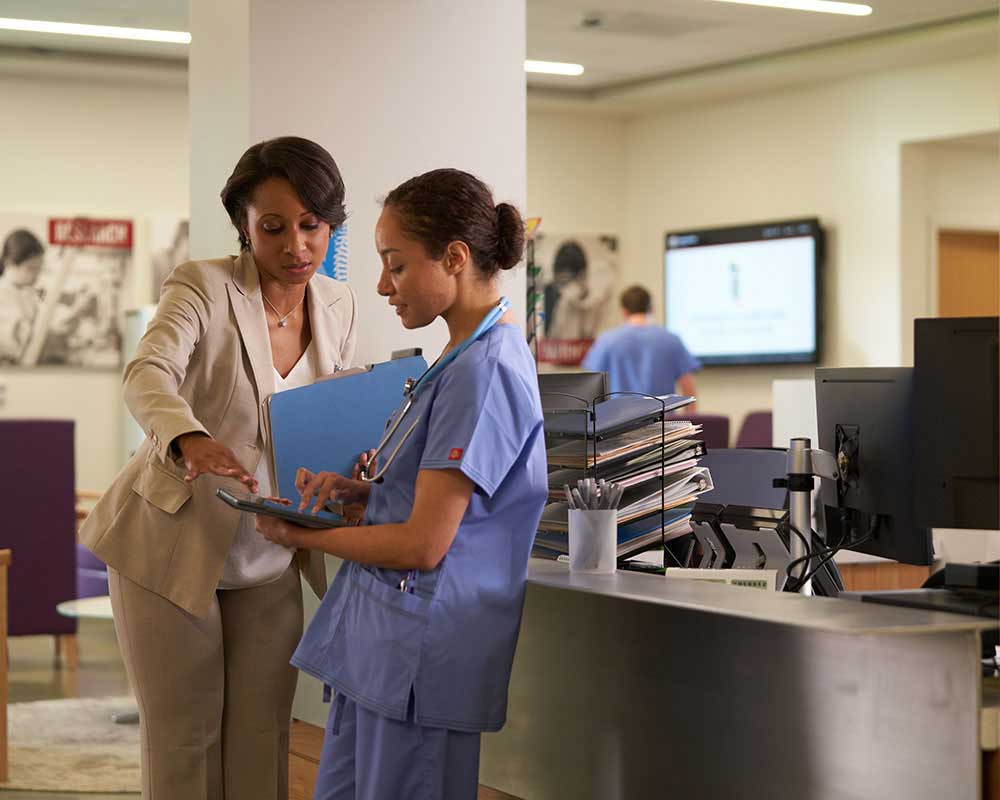Best Practices in Medical Administration for Improving Performance and Reducing Prices
In the ever-evolving landscape of health care, the search of best methods in medical management is critical for boosting effectiveness and curbing costs. By incorporating sophisticated technologies such as digital wellness documents and telemedicine, medical care service providers can improve operations and boost person treatment.
Leveraging Advanced Technology
The assimilation of digital options into medical care systems has transformed the method centers run, enhancing processes and enhancing patient treatment. By systematizing person info, EHRs get rid of the requirement for troublesome documents and help with smooth communication among medical care service providers.
Telemedicine is one more technical innovation that has actually reinvented individual interaction. It offers convenience for both patients and healthcare specialists by enabling remote examinations, which can reduce the requirement for in-person brows through and optimize visit organizing. Additionally, telehealth systems can expand healthcare accessibility to rural or underserved areas, bridging voids in care distribution.
Moreover, making use of Expert system (AI) and maker discovering is becoming increasingly widespread in anticipating analytics, allowing for very early discovery of possible health and wellness issues and even more enlightened decision-making. These modern technologies, when incorporated properly, can enhance analysis accuracy and personalize patient therapy strategies, inevitably bring about boosted health care outcomes and operational efficiency.
Optimizing Resource Allowance
By tactically handling resources such as personnel, equipment, and financial resources, health care facilities can significantly enhance their functional efficiency, boost patient results, and reduce unnecessary expenses. The initial step in maximizing source allowance includes conducting a thorough analysis of present properties and identifying areas where sources might be underutilized or exhausted.
Prioritizing source allotment based on individual requirements and solution needs is necessary. Applying flexible staffing versions can likewise enhance labor sources by adjusting employees allocation in action to changing client quantities.
Funds ought to be diligently checked and allocated with calculated foresight to sustain both temporary operational demands and long-lasting institutional goals. This consists of investing in training programs that enhance personnel expertises and taking on energy-efficient techniques that lower functional costs (medical administration). Inevitably, an enhanced resource allotment technique promotes a lasting health care environment that is receptive, effective, and monetarily prudent
Streamlining Operations Processes
When medical care centers aim to boost functional effectiveness, streamlining process procedures ends up being a crucial focus. Efficient workflows minimize redundancy, get rid of unneeded actions, and improve coordination among healthcare specialists. This method not just increases solution distribution yet additionally enhances the top quality of person treatment.

Following, innovation assimilation plays a significant role in streamlining workflows. Applying electronic health records (EHRs) and digital medical professional order entry (CPOE) systems decreases documentation, lessens human error, and ensures details comes to all appropriate employees. In addition, leveraging telemedicine platforms can simplify person assessments and follow-ups, minimizing the strain on physical framework.

Inevitably, structured process result in cost decreases and improved client satisfaction, fostering a more sustainable medical care setting.
Enhancing Data Management
Building upon streamlined operations, enhancing data monitoring ends up being an essential element ahead of time medical care management. Efficient data monitoring systems are vital for maintaining precise individual documents, boosting our website decision-making, and guaranteeing compliance with governing requirements. By executing durable data management services, healthcare centers can enhance the top quality of client treatment while concurrently minimizing operational expenses.
One trick facet of enhancing information management is the assimilation of innovative electronic health document (EHR) systems. These systems facilitate the smooth exchange of patient info throughout different divisions, decreasing duplication of tests and minimizing errors. A well-designed EHR system supports data analytics, enabling medical care service providers to identify fads and website link make notified decisions concerning person care.
Furthermore, securing client information is extremely important. Embracing detailed cybersecurity actions, consisting of encryption and regular audits, makes sure the integrity and privacy of delicate details. This not only protects clients yet likewise preserves the organization's online reputation.
Spending in team training is one more essential element. Informing health care specialists on information monitoring practices improves their capacity to successfully make use of technology, bring about boosted patient outcomes. Finally, enhancing information administration via advanced technology and extensive training is necessary for accomplishing efficiency and expense reduction in medical management.
Fostering Collaborative Communication
An essential element in advancing clinical administration is cultivating joint interaction amongst medical care specialists. Reliable interaction is extremely important for ensuring smooth patient treatment, maximizing therapy results, and decreasing mistakes. By urging open discussion and control throughout multidisciplinary teams, medical care organizations can enhance their operational performance and lower unneeded expenses.
Central to this method is the integration of interaction modern technologies such as electronic health documents (EHRs) and safe and secure messaging systems, which help with the rapid exchange of essential patient information. These devices make it possible for doctor to gain access to and share data in real time, ensuring that all staff member are educated and why not look here aligned in their decision-making processes. Additionally, routine team meetings and interdisciplinary rounds can even more advertise a society of partnership and responsibility.
Educating programs focused on boosting communication abilities are likewise essential. Eventually, fostering joint communication leads to boosted health care delivery and price savings.

Final Thought
Incorporating sophisticated modern technology, such as digital health and wellness documents and telemedicine, alongside optimized source allowance and streamlined operations procedures, is vital for enhancing efficiency in medical management. Efficient information monitoring and cultivating joint interaction amongst medical care groups are critical for decreasing redundancies and boosting treatment high quality. By prioritizing preventive care and engaging in top quality renovation campaigns, health care organizations can achieve significant price financial savings and enhanced individual results, therefore making sure sustainable healthcare distribution in a progressively complicated environment.